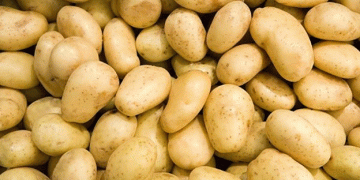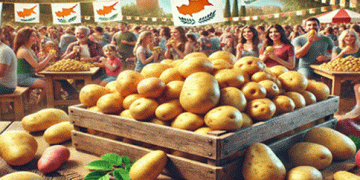Current Challenges and Market Dynamics for Potato Growers and Suppliers
The potato industry faces critical challenges and opportunities in its marketing and production strategies. Despite a plentiful supply of storage crop Russet potatoes from Idaho, prices remain below production costs, posing significant concerns for growers and suppliers. In contrast, colored potatoes are experiencing a deficit across the United States, particularly impacting regions such as Florida, Western Texas, California, North Carolina, and Virginia.
Ken Gad of Cambridge Farms, Inc. highlights the disparities in the market, noting that while the movement of colored potatoes is strong, high retail prices and inconsistent yield results create ongoing frustrations. In North Carolina, for example, yields have been notably lower than expected due to challenging planting and growth conditions.
High Retail Prices and Market Evolution
Despite the high retail prices for colored potatoes, the market movement remains robust. FOB prices for red potatoes are currently at $48, and yellow potatoes at $46. However, Gad emphasizes the issue with retailers not adjusting their pricing in response to market fluctuations, maintaining high prices irrespective of changes in FOB costs. This static retail pricing undermines the traditional approach of driving sales through high volume, low-cost packaged goods.
The potato category is witnessing an evolution in its marketing strategies, with a significant shift towards fighting for shelf space. The traditional 12 to 16 feet of shelf space allocated to potatoes is now divided among an increasing number of SKUs. This fragmentation includes a variety of potato types such as yellows, reds, whites, medley packs, tray packs, loose reds, loose whites, as well as creamer potatoes or baby/marble varieties. These types, once discarded, are now marketed as premium products, impacting overall volume.

Specialization and Strategic Partnerships
The industry’s need to reassess marketing strategies is evident as growers increasingly specialize in colored potatoes. Regions like Maine, which traditionally focused on white potatoes, are now expanding their production to include more Russet, red, and yellow potatoes. The shift towards yellow potatoes, in particular, reflects changing consumer preferences, with major players in the market favoring yellow over white potatoes.
Additionally, some growers are exploring niche markets such as fingerling and organic potatoes, although these require specialized skills and dedicated efforts. The evolution of potato marketing is characterized by rapid changes and the formation of strategic partnerships, highlighting the importance of adaptability in the industry.
In conclusion, the potato industry’s marketing landscape is rapidly transforming, driven by consumer preferences, retail dynamics, and strategic shifts in production. Growers, suppliers, and marketers must continuously adapt to these changes to remain competitive and meet market demands effectively.






